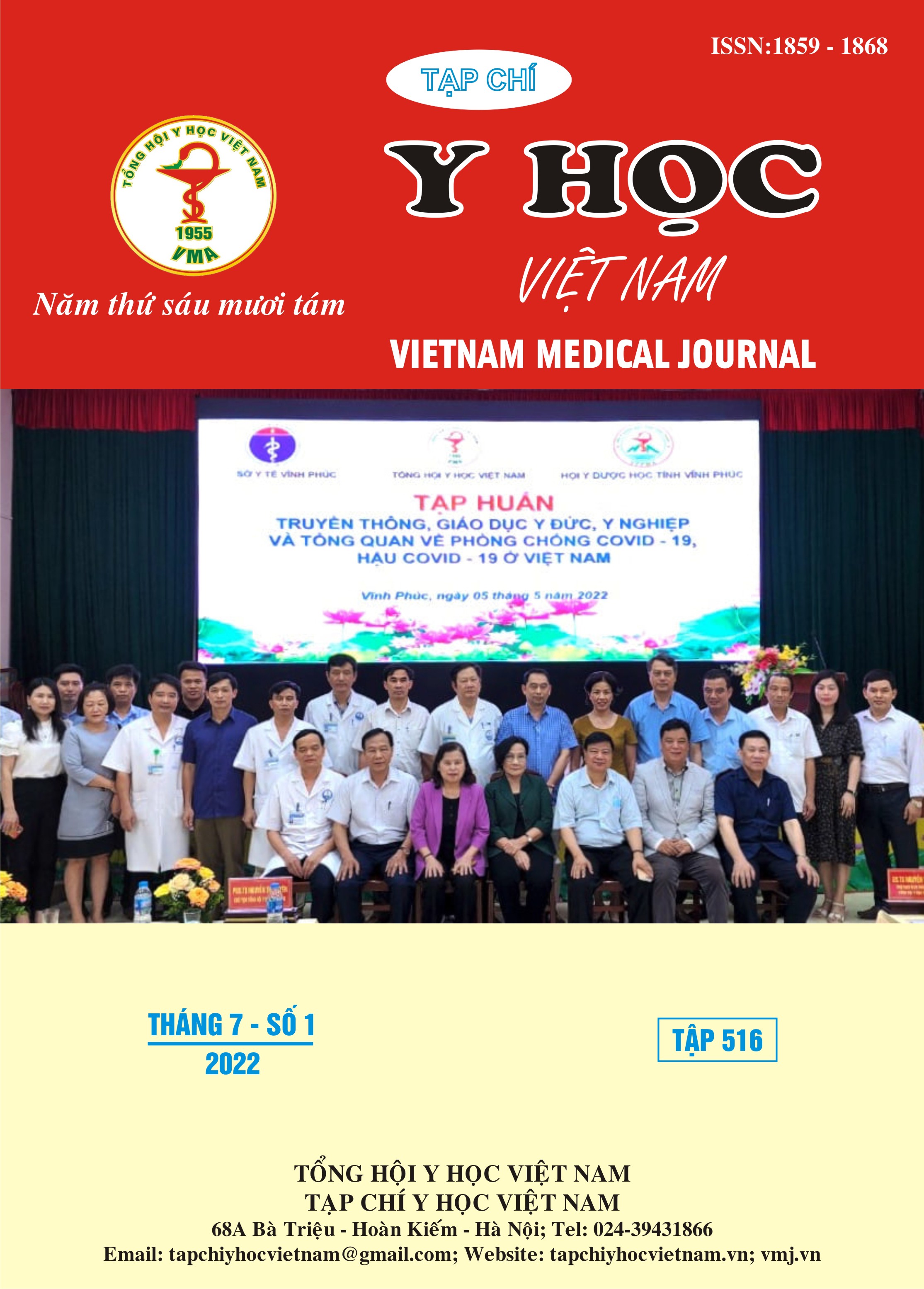POST-3-MONTH EVALUATION OF AUTOLOGOUS STEM CELL TRANSPLANT IN THE TREATMENT OF BILLARY ATRESIA IN VIETNAM NATIONAL CHILDREN’S HOSPITAL
Main Article Content
Abstract
Objective: to evaluate the early outcome of the autologous stem cell transplant (ASCT) in the treatment of billary atresia (BA) in Vietnam National Children’s Hospital. Subjects and methods: this is a prospective case-series, enrolled 31 patients diagnosed with BA, they were treated with Kasai surgery in combination with ASCT in Vietnam National Children’s Hospital from May 2021 to April 2022. Results: 31 patients were enrolled in the study, amongst those there was only 1 patient who did not fully follow the research. The ratio of male: female was 1:1. The mean age at the time of surgery is 78.8 days old. Prior to the treatment, 100% of the patient had jaundice and white or pale stool; both of these two signs were reduced at 3 months post-op, respectively (p < 0.001). There is a statistically significant difference in the level of total billirubin, conjugated billirubin, ALP and GGT between pre-op and 3-month-post-op (p < 0.01, p < 0.01, p < 0.01 and p < 0.05, respectively). At 3-month post-op, 40% of the patients had complete bile flow, 61.29% of the patients suffered from cholangitis. The median of APRI score of the pre and post-op was 0.82 and 1.16, respectively (p > 0.05); the mean PELD score of the pre-surgery and post-surgery was 9,26 and 3.83, respectively (p < 0.05). Conclusion: there is a significant improvement in the clinical manifestation, laboratory findings and PELD score after the ASCT in the treatment of BA. In the future, we would like to conduct a similar research with a bigger population and longer follow-up duration in order to fully evaluate the outcome of this therapy.
Article Details
Keywords
billary atresia, autologous stem cell therapy, outcome
References
2. Nguyễn Huy Toàn, Phạm Duy Hiền (2021), "Cắt xơ rốn gan rộng rãi trong phẫu thuật Kasai điều trị teo đường mật bẩm sinh". Tạp chí Y học Việt Nam. 508(2).
3. Hoàng Thị Xuyến (2013), Nghiên cứu đặc điểm lâm sàng, cận lâm sàng, phân loại và tỷ lệ nhiễm Cytomegalovirus ở bệnh nhân teo đường mật bẩm sinh, Luận văn Thạc sĩ Y học, Đại học Y Hà Nội.
4. Phạm Thị Hải Yến (2019), Nghiên cứu kết quả và một số yếu tố liên quan đến kết quả dẫn lưu mật sau phẫu thuật Kasai trên bệnh nhân teo mật bẩm sinh, Luận văn Thạc sĩ Y học, Đại học Y Hà Nội.
5. Gad EH, et al. (2021), "Short- and long-term outcomes after Kasai operation for type III biliary atresia: Twenty years of experience in a single tertiary Egyptian center-A retrospective cohort study". Ann Med Surg. 62 pp.302–14.
6. Hanalioğlu D, et al. (2019), "Revisiting long-term prognostic factors of biliary atresia: A 20-year experience with 81 patients from a single center". Turkish J Gastroenterol. 30(5) pp.467.
7. Ihn K, Ho IG, Chang EY, Han SJ (2018), "Correlation between gamma-glutamyl transpeptidase activity and outcomes after Kasai portoenterostomy for biliary atresia". J Pediatr Surg. 53(3) pp.461–7.
8. Liu CS, Chin TW, Wei CF. (1998), "Value of gamma-glutamyl transpeptidase for early diagnosis of biliary atresia.". Zhonghua Yi Xue Za Zhi (Taipei). 61(12) pp.716–20.
9. Sharma S, Kumar L, Mohanty S, Kumar R, Datta Gupta S, Gupta DK. (2011). "Bone marrow mononuclear stem cell infusion improves biochemical parameters and scintigraphy in infants with biliary atresia". Pediatr Surg Int. 27(1) pp.81–9.


